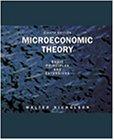23.5 The calculations in Problem 23.4 assume there is no difference between the decision on cutting a
Question:
23.5 The calculations in Problem 23.4 assume there is no difference between the decision on cutting a single tree and managing a woodlot. But managing a woodlot also involves replanting, which should be explicity modeled. To do so, assume a lot owner is considering planting a single tree at a cost w, harvesting the tree at t*, planting another, and so forth forever. The discounted stream of profits from this activity is then V- -w + e'
r
'[f{t) - u>] + er2t
[f(t) - w ] . . . er n t
[f(t) -w] + ...
a. Show that the total value of this planned harvesting activity is given by fjt) - w v = - ^ -
w
-
b. Find the value of t that maximizes V. Show that this value solves the equation f(t*) = rf(t*) + rV(t*).
c. Interpret the results of part (b)—how do they reflect optimal usage of the "input" time?
Why is the value of t* specified in part
(b) different from that in Example 23.2?
d. Suppose tree growth (measured in constant dollars) follows the logistic function
/(*) = 50/(1 + e 10
-
1
').
What is the maximum value of the timber available from this tree?
e. If tree growth is characterized by the equation given in part (d), what is the optimal ro tation period if r = .05, w = 0? Does this period produce a "maximum sustainable" yield?
f. How would the optimal period change if rfell to .04?
[Note: The equation derived in part
(b) is termed Faustmann's equation in forestry economics.]
Step by Step Answer:

Microeconomic Theory Basic Principles And Extensions
ISBN: 9780030335938
8th Edition
Authors: Walter Nicholson






